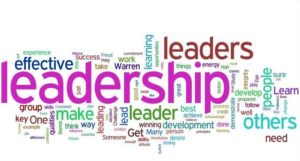 If you want to create and lead inclusive cultures that last, then as a leader, you have take leadership. Too many organizations are delegating culture development to the Human Resources Department and abdicating their leadership responsibility.
If you want to create and lead inclusive cultures that last, then as a leader, you have take leadership. Too many organizations are delegating culture development to the Human Resources Department and abdicating their leadership responsibility.
When a new client, Soraya, (CEO of a mid-size company) told me that she wanted her organization known as a best place to work, I asked, “When do you want to talk vision and strategy?” Her reply, “I’ll introduce you to Angelina, our director of Human Resources.” I said “Before you do that, I need to ask you three questions.
1- Who develops the vision for the company culture?
2- Who the decides the direction of the organization?
3- Who ultimately is responsible for the overall business strategy and the financial results of that strategy?”
To all three questions she answered, “I do, along with the executive team.” When I pointed out that organizational culture had to be in alignment with vision, direction and strategy and that it takes process leadership, she suddenly realized that Human Resources alone didn’t have the power, influence or resources to build the great, inclusive culture she envisioned.
Workplace culture is how you do business, how you engage your employees, how people work together, how leadership sets examples, and how you serve the customer. Workplace culture is what brings people together to collaborate or sets them up in silos with no mutual support or information sharing. Workplace culture is what makes all employees feel welcome, included and part of a community, or it can make new employees feel like they have to fend for themselves, and employees who’ve been their longer hesitant to take time from their work to help newcomers. A great workplace culture that lasts makes people want to work there and bring other talented colleagues. A bad workplace culture shouldn’t last but often does. It makes people go to work because they have to and warn their friends away. Leadership makes or breaks the culture.
Envisioning, developing and nurturing an inclusive, innovative workplace culture that lasts is a process and not a one-time event. It’s ongoing in every system and process, at every level and is able to exist even after you’re gone from the organization.
It can’t be left to one separate department, or consist of just lunch and learns, online-training or potlucks.
Who Needs to be Involved?
As a leader, you and the executive team need to lead the process. That doesn’t mean it’s all up to you. Everyone needs to be engaged with you since it’s the people at the top, the middle and the lower levels that live, embrace and practice the culture. Bring in leadership from sales and marketing, research and development and every other department if you have them. Make Human Resources your key strategic business partner. Give them more power and resources since they are the “Humans” of Human Resources so they can do what they need to provide training, and establish policies, procedures and involve other more people.
Get serious about your legacy and the need to create a great, inclusive culture that lasts after you’re gone from the organization. It’s up to you to lead and ensure that everyone develops and uses their individual leadership skills so they can do their best work, help innovation thrive and that the culture lasts after you leave.
i




Recent Comments